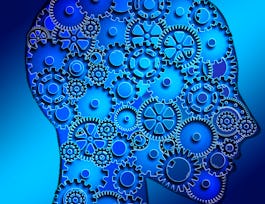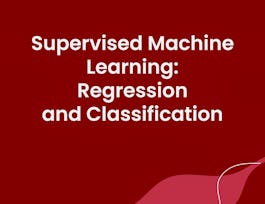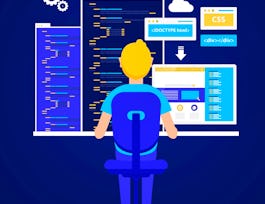This course is designed for business professionals that wish to identify basic concepts that make up machine learning, test model hypothesis using a design of experiments and train, tune and evaluate models using algorithms that solve classification, regression and forecasting, and clustering problems.



Train Machine Learning Models
This course is part of CertNexus Certified Data Science Practitioner Professional Certificate


Instructors: Stacey McBrine
Sponsored by Barbados NTI
Recommended experience
Details to know

Add to your LinkedIn profile
4 assignments
See how employees at top companies are mastering in-demand skills

Build your Machine Learning expertise
- Learn new concepts from industry experts
- Gain a foundational understanding of a subject or tool
- Develop job-relevant skills with hands-on projects
- Earn a shareable career certificate from CertNexus


Earn a career certificate
Add this credential to your LinkedIn profile, resume, or CV
Share it on social media and in your performance review

There are 5 modules in this course
In the previous courses in the CDSP specialization, your data underwent a great deal of preparation. It's time to start looking at developing machine learning models. These models will be instrumental in achieving your business objectives because they can intelligently estimate much about the world. But before you start building these models, you need to have a firm grasp on what goes into machine learning and what it means to use machine learning to test a hypothesis.
What's included
15 videos6 readings1 assignment2 peer reviews1 discussion prompt
The first type of machine learning task you'll build models for is classification. Classification has many applications across many different fields, so it's a good starting point. In this module, you'll train classification models, tune those models, and then evaluate them as part of a process of iterative improvement.
What's included
18 videos9 readings1 assignment1 discussion prompt7 ungraded labs
The next major machine learning task you'll undertake is regression. Whereas classification is about placing things in categories, regression is about estimating numbers. As with the previous module, in this module you'll train, tune, and then evaluate models that perform regression.
What's included
13 videos7 readings1 assignment1 discussion prompt4 ungraded labs
You've built supervised learning models using both classification and regression. But now it's time to work with unsupervised learning, where labeled data is not readily available. In this module, you'll implement unsupervised learning in the form of clustering models, which can group observations that share common traits. Just like before, you'll develop these models as a process of training, tuning, and evaluation.
What's included
9 videos5 readings1 assignment1 discussion prompt4 ungraded labs
You have developed models for classification, regression and clustering, in this module you will apply what you have learned working within a practical scenario. Using a Jupyter notebook you will perform machine learning tasks. You are given the choice of three notebooks, each of which leverages a different type of algorithm.
What's included
1 peer review1 ungraded lab
Offered by
Why people choose Coursera for their career




Recommended if you're interested in Data Science

University of Washington

DeepLearning.AI

Whizlabs

Open new doors with Coursera Plus
Unlimited access to 10,000+ world-class courses, hands-on projects, and job-ready certificate programs - all included in your subscription
Advance your career with an online degree
Earn a degree from world-class universities - 100% online
Join over 3,400 global companies that choose Coursera for Business
Upskill your employees to excel in the digital economy



